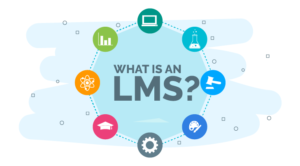A Complete Guide to Automated Machine Learning (AutoML)

Artificial Intelligence (AI) is the biggest contributor to change in today’s world. While humans are generating data at an exponential rate, AI-powered solutions still need more of it. This is where automated machine learning (AutoML) comes into play. We are now in the era where AI creates AI, using AutoML that allows businesses to leverage AI without relying excessively on data science expertise.
In this post, we will dive into the world of AutoML, its potential, components, and more. So, if you want to know how organizations can leverage the technology to their benefit, keep reading.
What is Automated Machine Learning AutoML?
Historically, we have relied on humans to make technology work better. Automated Machine Learning (AutoML) challenges this notion as it automates the entire pipeline for creating machine learning models.
According to Statistics, the AutoML market size is expected to reach $7.35 billion by 2028, with a CAGR of 44.9%.
AutoML simplifies the machine learning pipeline by covering data prep, model selection, feature selection, and hyperparameter tuning. Users without in-depth knowledge of underlying algorithms, methodologies, or tuning procedures can also build and tune ML models.
The tools and frameworks of AutoML bring machine learning solutions to everyone, allowing companies to build models faster and cheaper with higher accuracy and speed.
How Does AutoML Work?
Now that it is clear what AutoML is let us look at how AutoML works.
Step 1: Adding Data
Data input is the first step in adding datasets to the AutoML platform. It can contain organized data, like numbers in tables, and some unstructured data, like text and pictures. Then, the platform analyzes the data to determine what information it holds.
Step 2: Data Processing
The second step is preparing data, where these platforms instantly clean the data by finding missing values and fixing them, removing copies, and preparing the data for analysis. To make model performance even better, it can also create new features based on the existing data.
Step 3: Model Selection
Afterward, it is time to pick the model in the AutoML platform. Here, the platform automatically evaluates multiple machine-learning algorithms to identify the best fit for your data. It examines various models based on factors such as accuracy, speed, and suitability for the problem at hand.
Step 4: Hyperparameter Optimization
Once a model is chosen, the next step is tuning its hyperparameters. AutoML platforms automate this process by testing different configurations to optimize the model’s performance. This step ensures that the selected model is fine-tuned for the best possible results.
Step 5: Model Training
In this stage, the platform trains the selected model using the prepared dataset. AutoML ensures that the training process is efficient, applying advanced techniques like cross-validation to help the model learn patterns and relationships within the data.
Step 6: Model Evaluation
After training, the model’s performance is evaluated using metrics such as accuracy, precision, recall, and F1 score. The platform compares the model’s predictions against actual outcomes to ensure reliability.
Step 7: Model Selection and Ensembling
If multiple models are trained, the platform may combine them into an ensemble. Ensembling blends predictions from different models to improve overall accuracy and reduce errors. AutoML makes this process seamless, selecting the best-performing ensemble for deployment.
Step 8: Deployment
Once the model is ready, it is deployed to a production environment. AutoML platforms simplify deployment by providing integrations with cloud services or APIs, allowing users to start leveraging the model in real-world applications quickly.
Step 9: Monitoring and Maintenance
After deployment, monitoring is critical to ensure the model continues to perform well over time. AutoML platforms track metrics like accuracy drift and data changes, automatically retraining or updating the model when necessary.
Step 10: User Interface and Reporting
Finally, AutoML platforms offer user-friendly interfaces and detailed reports. These tools help users understand model performance and insights, even without technical expertise. Comprehensive dashboards and visualizations make it easy to monitor progress and share results with stakeholders.
What is the Importance of Automated Machine Learning Platforms?
There are several reasons for AutoML platforms to exist:
- Machine Learning Democratization: AutoML makes ML more accessible, allowing businesses with limited ML expertise to also leverage the machine learning solutions to their benefit, including better decision making.
- Closes the Skill Gap: Skilled data scientists are still a rarity. AutoML addresses this skill gap by making it possible for ML professionals with limited ML understanding to create complex models.
- Efficient and Time Saving: As AutoML automates tasks like feature engineering, model selection, and hyperparameter tuning, it saves time. Additionally, it is capable of managing multiple models and complex tasks.
- Better Model Performance: AutoML platforms can analyze several models and hyperparameters, choosing the best one for better model performance.
- Reduces Cost: Automating tasks means that you need fewer data scientists, leading to significant cost reduction.
- Consistency and Error Reduction: Human errors are reduced in the model development process, resulting in consistent and reliable outcomes.
- Improved Scalability: The technology can manage huge datasets and adapt to different problems, which makes scaling ML solutions across an organization easier.
- Rapid Prototyping: Use it for quick prototype development, enabling faster iterations and experimentation.
- Accuracy through Maintenance and Retraining: Offer a streamlined process for model maintenance and retraining, ensuring that the results remain accurate and relevant.
- Transparency and Interpretability: Some AutoML platforms also offer features that explain model decisions, tackling the “black box” problem.
Automated Machine Learning – How Different Industries are Using the Technology
While the potential of AutoML is limitless, its current usage is not. Let us now look at the few use cases of AutoML in play currently.
Financial Sector:
Automated feature engineering and model selection with AutoML can help financial services in a variety of ways:
Fraud Detection: Extensive testing of transaction data can make subtle patterns, finding fraud indicators that humans might miss.
Customer Churn Prediction: Segmenting customers based on different indicators and leveraging various models testing to predict churn probability accurately is possible with AutoML.
Credit Scoring: Using financial indicators like debt-to-income ratio, payment history, and credit utilization allows these platforms to provide accurate credit scoring quickly.
Healthcare & Life Sciences
AI in healthcare is a huge domain. Here, AutoML platforms are equipped to handle the complex and high dimensionality of medical data and are being used in the following ways:
Drug Discovery: Testing several models on molecular structure data allows AutoML platforms to accelerate the initial screening process in drug discovery.
Disease Prediction: Using information like genetic markets, lifestyle factors, clinical test results, and more can offer accurate disease risk assessment.
Readmission Risk: Leveraging hospital records, treatment data, admission histories, and other data allows for the creation of a predictive model that can forecast readmission risks.
AI in Manufacturing and Operations
The manufacturing sector is leveraging AutoML to optimize processes, enhance productivity, and minimize costs. Here’s how it’s being utilized:
Predictive Maintenance: By analyzing sensor data, usage patterns, and operational metrics, AutoML can predict equipment failures, reducing downtime and maintenance costs.
Quality Control: Automated inspection systems use data from cameras and sensors to identify defects, ensuring consistent product quality.
Supply Chain Optimization: AutoML helps in demand forecasting, inventory management, and logistics planning, enabling a smoother supply chain operation.
Retail & E-Commerce
Retailers and e-commerce platforms use AutoML to understand customer behavior and improve their offerings:
Personalized Recommendations: Analyzing customer purchase history, browsing behavior, and preferences allows AutoML to suggest products tailored to individual needs.
Dynamic Pricing: AutoML algorithms evaluate market trends, competitor pricing, and customer demand to optimize pricing strategies in real-time.
Inventory Forecasting: By processing historical sales data, seasonal trends, and external factors, AutoML ensures optimal stock levels and prevents overstocking or shortages.
Energy and Utilities
AutoML is revolutionizing the energy and utilities sector by enhancing efficiency and sustainability:
Energy Demand Forecasting: Using historical consumption patterns, weather data, and market trends, AutoML predicts energy demand for efficient resource allocation.
Grid Management: Analyzing real-time grid data helps identify anomalies and optimize energy distribution.
Renewable Energy Optimization: AutoML supports the integration of renewable energy sources by predicting energy generation patterns and improving storage strategies.
Telecommunications
The telecom industry is leveraging AutoML to enhance service quality and operational efficiency:
Network Optimization: AutoML evaluates network performance data to predict congestion and optimize bandwidth allocation.
Customer Support Automation: Chatbots and virtual assistants powered by AutoML provide personalized and efficient customer service.
Churn Prevention: By analyzing usage patterns and customer complaints, AutoML identifies at-risk customers and suggests retention strategies.
AutoML V/S Traditional Machine Learning
Now that we have clarity on what AutoML is, let us look at how it is different form traditional machine learning:
| Feature | AutoML | Traditional ML |
| Time for Setup | Quick setup with pre-configured pipelines. | Longer setup due to manual configuration and setup of tools and frameworks. |
| Expertise Level | Minimal expertise required; suitable for non-technical users. | Requires deep technical knowledge in machine learning and programming. |
| Data Preparation | Automated preprocessing and feature engineering. | Manual data cleaning and feature engineering for tailored solutions. |
| Model Selection | Automated selection from a library of models. | Manual selection and implementation based on expertise and experimentation. |
| Development Speed | Faster due to automation in most stages. | Slower because of manual processes and iterations. |
| Scalability | High scalability for repetitive tasks and large datasets. | Depends on the skill level and available resources. |
| Flexibility | Limited flexibility; relies on pre-defined frameworks. | High flexibility to customize every aspect of the model and pipeline. |
| Performance | Generally good but may not match highly optimized manual models for complex use cases. | Can achieve superior performance with expert tuning and customization. |
| Cost | Cost-effective by reducing the need for extensive expertise and resources. | Expensive due to resource-intensive manual efforts and expert involvement. |
| Tuning Hyperparameters | Automated, using grid search or similar algorithms. | Manual, requiring deep expertise for fine-tuning. |
| Bias Reduction | Limited bias mitigation depending on the tool. | Greater control over bias mitigation during data preparation and model tuning. |
| Continuous Learning | Limited support for adaptive learning models. | Full customization to incorporate continuous learning mechanisms. |
| Monitoring and Maintenance | May provide basic monitoring tools; less customizable. | Fully customizable monitoring systems for real-time insights and adjustments. |
| Use Cases | Ideal for rapid prototyping, simple problems, or when speed is critical. | Best for complex, domain-specific problems needing detailed customization. |
| Learning Curve | Minimal learning curve; easy for beginners. | Steep learning curve requiring significant effort to master. |
The Architecture of Advanced AutoML Platform
AutoML contains a range of interconnected components divided into layers. Let us have a look at them:
Data Ingestion and Preprocessing Layer
Collecting Data:
- Using multiple sources like APIs, Open datasets, databases
- Adding techniques relevant to data searching and filtering
- Employs methods for data relevance and quality
Data Cleaning
- Implements automated cleaning tools (e.g., Katara, AlphaClean)
- Detects and corrects errors, inconsistencies, and outliers
- Handles missing values and duplicates
- Supports continuous data cleaning for dynamic datasets
Data Labeling
- Assigning meaningful labels to raw data to make it usable for supervised learning.
- Utilizing manual labeling, crowdsourcing, or automated tools.
- Ensuring consistency and accuracy through quality checks.
Data Augmentation
- Generating new data samples by applying transformations like rotation, flipping, or noise addition.
- Enhancing diversity in datasets to improve model generalization.
- Useful for imbalanced datasets to create an equal representation of classes.
Data Transformation
- Converting data into formats suitable for machine learning models (e.g., text to embeddings, images to arrays).
- Applying scaling, normalization, or encoding techniques.
- Reshaping and restructuring datasets for compatibility with selected algorithms.
Data Synthesis
- Creating artificial datasets using methods like GANs or synthetic oversampling (e.g., SMOTE).
- Useful for simulating scenarios where real data is scarce.
- Balances datasets to address class imbalances and enhance learning performance.
Validating Data
- Checking for consistency, accuracy, and completeness in datasets.
- Employing statistical methods like cross-validation for quality assurance.
- Ensuring alignment between data and intended machine learning tasks.
Feature Engineering Layer
- Transforms raw data into features using scaling, encoding, and interaction terms.
- Identifies and optimizes features to enhance model accuracy and robustness.
- Reduces overfitting by selecting relevant features, improving model simplicity and interpretability.
- Automates feature discovery with techniques like evolutionary algorithms.
- Iteratively validates and refines features for specific datasets and problem domains.
Model Selection and Training Layer
- Offers a variety of machine learning and deep learning algorithms.
- Employs optimization techniques like Bayesian methods and genetic algorithms.
- Manages the training process, including cross-validation.
- Combines multiple models to boost performance.
Neural Architecture Search (NAS) Module
- Designs and evaluates neural network architectures.
- Quickly assesses and refines architectures based on previous results.
AutoML Meta-Learning System
- Identifies task similarities to leverage past learnings.
- Stores successful models and configurations for future reuse.
- Applies knowledge from related tasks to solve new challenges.
Model Evaluation and Selection Layer
- Calculates performance metrics to rank models.
- Select the best model(s) based on predefined criteria.
Interpretability and Explainability Layer
- Highlights feature importance and visualize decision pathways.
- Generates human-readable explanations for model predictions.
Deployment and Serving Layer
- Prepares models for deployment with optimizations.
- Develops APIs for seamless integration across environments.
Monitoring and Maintenance Layer
- Monitors model performance post-deployment.
- Detects performance degradation and triggers retraining when needed.
User Interface and Workflow Management
- Provides an intuitive interface for AutoML configuration.
- Presents insights and results clearly while enabling pipeline customization.
Security and Governance Layer
- Manages data access and user permissions.
- Logs actions for accountability and regulatory compliance.
Hardware Optimization Layer
- Utilizes GPUs and distributes workloads for efficiency.
Custom Extension Framework
- Integrates user-defined algorithms and scripts into the pipeline.
Documentation and Reporting Engine
- Generates detailed process documentation and replicable model code.
Continuous Learning System
- Incorporates feedback and production data to improve AutoML strategies.
- Adapts platform behavior based on accumulated experience.
Automated Machine Learning (AutoML) – AI Creating AI
Automated Machine Learning (AutoML) is unique primarily because it is a form of artificial intelligence that makes machine learning solutions. This is meta-level AI, learning from their previous work and making adjustments accordingly.
However, you still need experts on your side to leverage the technology. This post is a short guide on how AutoML works, but if you want to create a solution based on this technology, get in touch with our AI consultants and explore your options.






